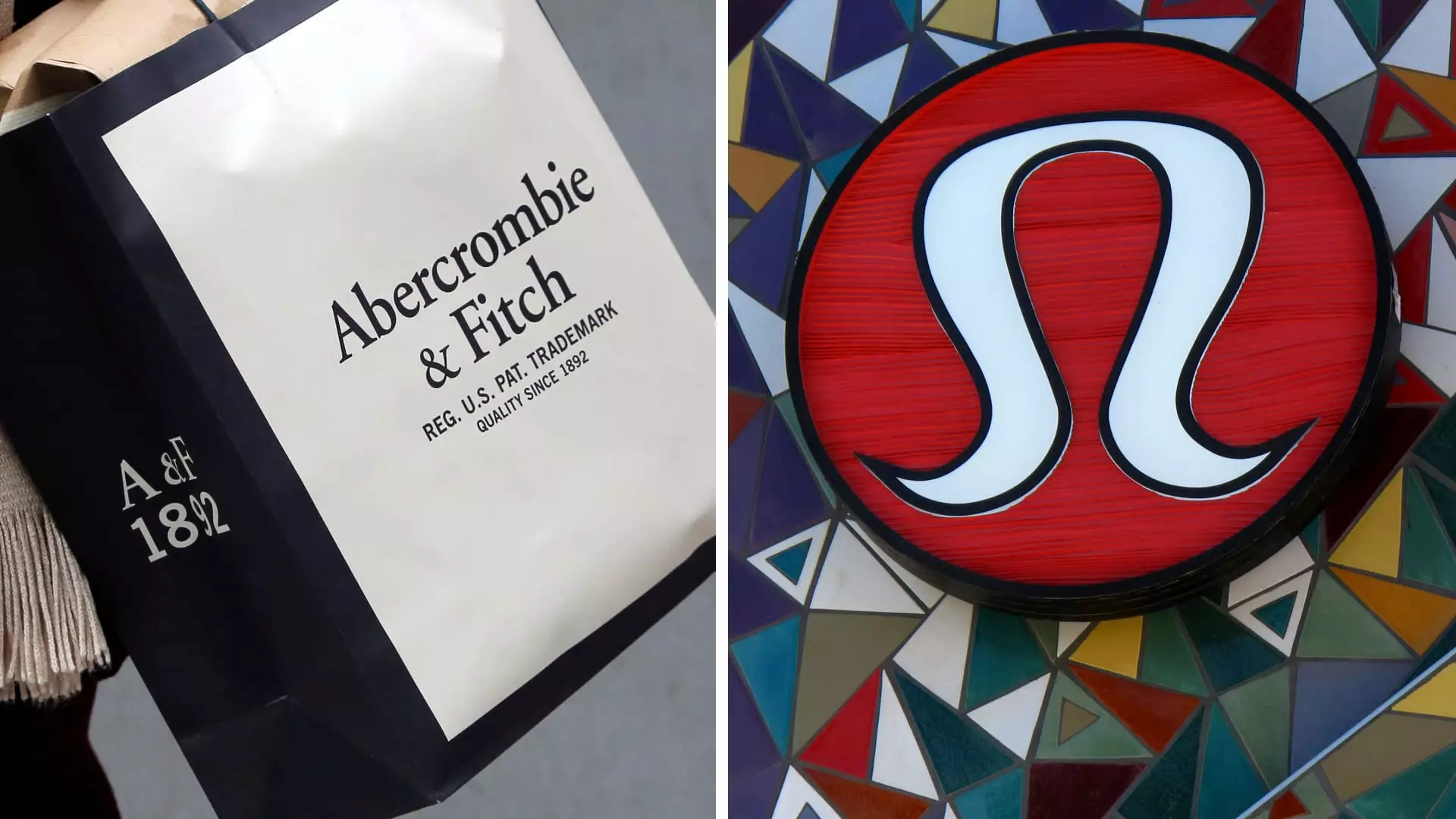As the holiday season unfolds, big-name retailers have recently shared their preliminary financial results. While many of these companies reported stronger-than-anticipated sales figures, the response from the stock market was tepid, leading to declines in their share prices. This article examines the contrasting performances of various retailers during this pivotal shopping period and the implications for the market moving forward.
On the surface, indications from major players in the retail sector paint a picture of a robust holiday season. Brands like **Lululemon**, **Abercrombie & Fitch**, and **American Eagle** updated their forecasts to include higher sales expectations for the fourth quarter, bolstered by positive consumer responses. For instance, Lululemon now projects quarterly sales growth of 11% to 12%, equating to revenues between $3.56 billion and $3.58 billion, a notable increase from earlier estimates. This revision was accompanied by an optimistic profit outlook, forecasting earnings per share (EPS) to fall between $5.81 and $5.85.
Abercrombie, too, reported an uptick in its sales projections, revising its net sales growth forecast from 5%-7% to a new range of 7%-8%. Despite these encouraging signs, the investor sentiment remained skeptical, resulting in significant stock price declines, most notably for Abercrombie, which saw its shares plummet by about 20%.
While some companies thrived, others struggled to keep pace. **Macy’s** stood out as one of the disappointing performers, adjusting its sales expectations downward for the holiday quarter and experiencing a 6% drop in share prices. The company’s revised range of $7.8 billion to $8 billion reflects a stark contrast to the more optimistic outlook shared by its competitors. This affordability dilemma has left many questioning whether Macy’s can rejuvenate its brand in the increasingly competitive retail landscape.
Not all was bleak, however. **Urban Outfitters** also shared an encouraging story of a 10% growth in net sales over the two-month period ending December 31. Driven primarily by robust online sales, Urban’s subsidiary brands—Anthropologie and Free People—recorded commendable performances, while the Urban Outfitters brand fell slightly short. The stark disparity in performance among Urban’s various brands illustrates the challenges even well-known retail companies face in maintaining brand equity across diverse product lines.
Despite the positive sales figures and raised forecasts, investors appear to be taking a cautious approach. The initial market excitement over the holiday shopping period did not translate into stock gains. Companies such as Lululemon and American Eagle—who also raised earnings expectations—still saw substantial declines of around 4%-6% in share value. This reflects not just concerns over individual company performances, but rather an overarching caution in the investment community regarding the sustainability of retail growth.
The common sentiment among investors may be driven by the uncertainty following two years of heightened sales resulting from pandemic-related changes in shopping behaviors. As the retail sector confronts challenging comparisons in year-over-year growth metrics, caution is warranted. The expectation is that while the holiday sales figures might show year-over-year gains, analysts predict that the growth will not reach the euphoric peaks enjoyed in the past two years.
The National Retail Federation projected holiday sales growth of just 2.5% to 3.5%, and with inflation factored in, real growth could be negligible. According to recent data from **Mastercard SpendingPulse**, total retail sales, excluding automotive purchases, rose by only 3.8% for the holiday season, which suggests that consumers are continuing to spend but may be more selective in their purchasing drivers.
The forthcoming **ICR Conference** is anticipated to shed more light on retail performance, as executives from major companies present their analyses and projections. The outcomes from the conference may set a more defined tone for the retail sector in the early part of the following year.
While the fiscal results from the early holiday season reveal pockets of optimism among certain retailers, the overarching investor skepticism, particularly reflected in stock performance, sets a cautious tone for the future. As retailers continue to adapt to the evolving shopping landscape, characterized by shifting consumer preferences post-COVID, sustaining meaningful growth will remain a complex challenge. Companies must balance their aspirations for profit with investment in brand loyalty and consumer engagement strategies to thrive amid economic uncertainties. The current landscape demands vigilance and adaptability as retailers navigate the path ahead.


Leave a Reply